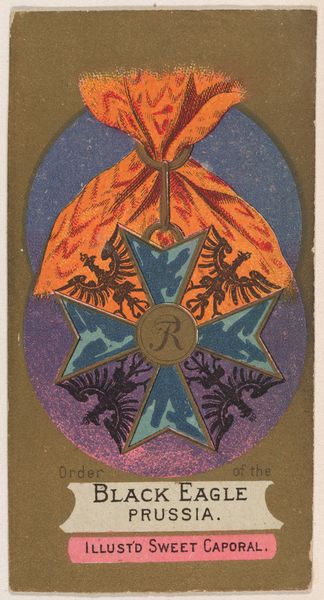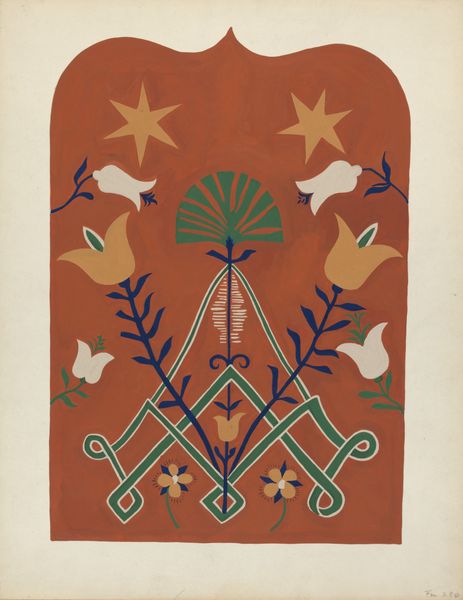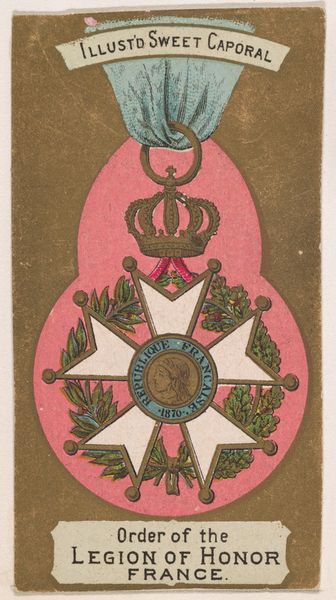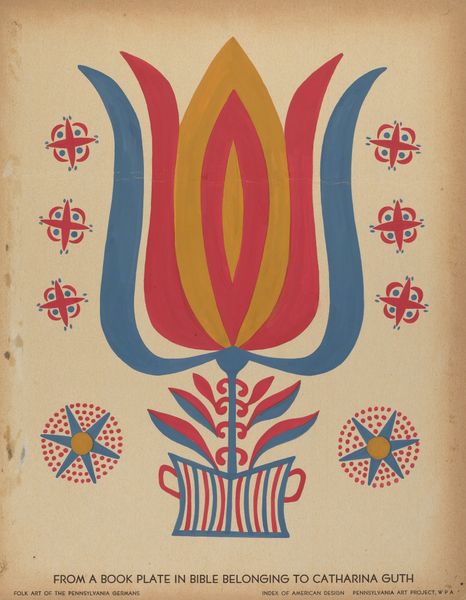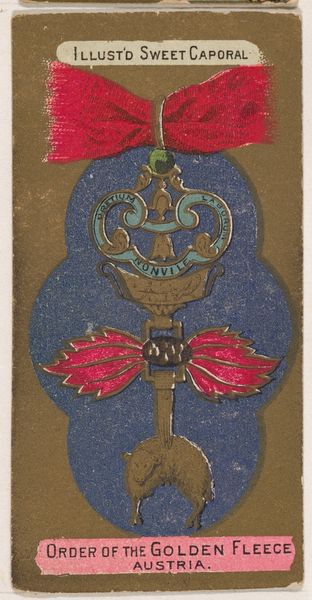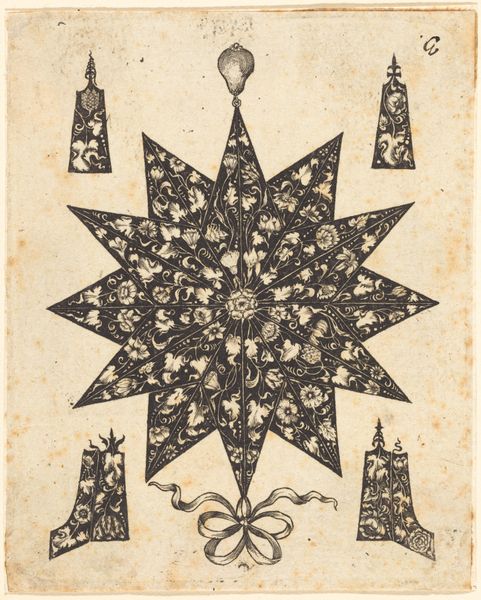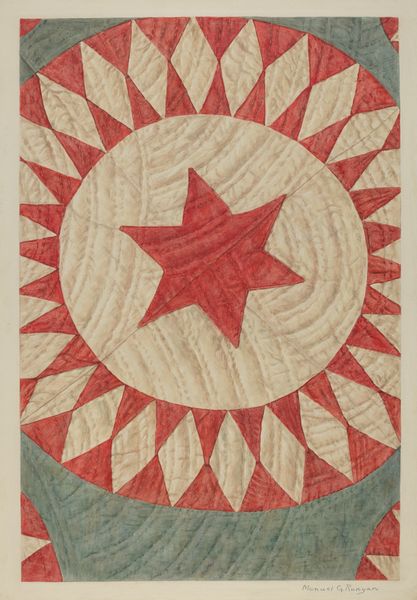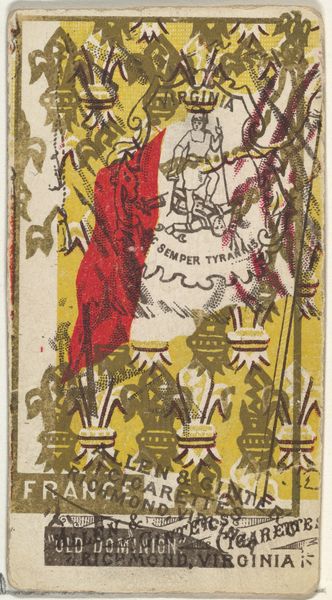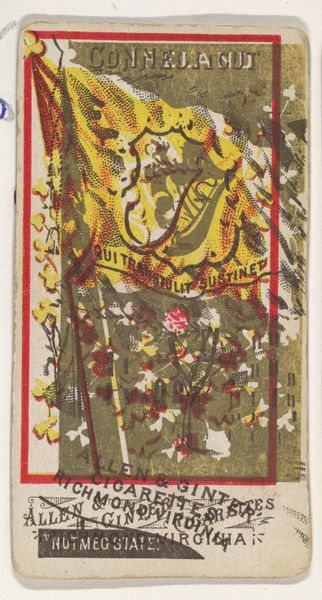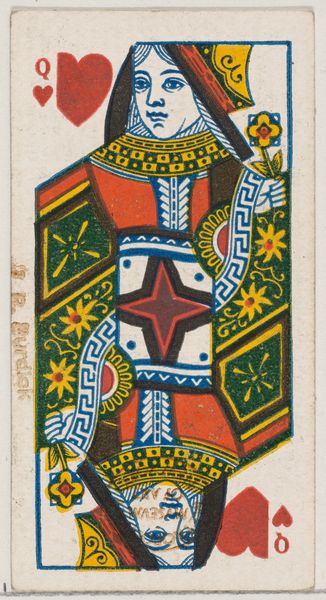
Order of the Black Eagle, Prussia, from the Military Series (N224) issued by Kinney Tobacco Company to promote Sweet Caporal Cigarettes 1888
0:00
0:00
drawing, print
#
drawing
# print
#
watercolour illustration
Dimensions: Sheet: 2 3/4 × 1 1/2 in. (7 × 3.8 cm)
Copyright: Public Domain
Editor: This little print, “Order of the Black Eagle, Prussia” from 1888, a promotional card for Sweet Caporal cigarettes, is unexpectedly striking. The eagle emblem, with its sharp lines, contrasts so vividly against the pastel backdrop. What's your take on this piece? Curator: The “Black Eagle” order speaks volumes about the enduring allure of symbols, doesn't it? Note how the artist deploys the eagle, not just as a bird, but as a loaded emblem, evoking power and prestige. We're immediately cued into Prussia's aspirations. Editor: Absolutely, the eagle is a recurring symbol, but its meaning seems to shift over time. Curator: Indeed, its representation evolves. What might the inclusion of "Sweet Caporal" suggest about the order's place in society at this moment, though? It's both elevated symbol and commercial item. Editor: I guess it's showing the intersection of aristocracy and consumer culture... almost a democratization of prestige? Curator: Precisely! This tension, the high and low intertwined, offers a glimpse into a society grappling with shifting values. Do you think it still manages to retain a sense of its original authority? Editor: Hmm, good question. I’m still slightly influenced by that eagle – it is powerful – even as a tiny image on a cigarette card! Curator: See, even its miniature size does not diminish the emotional residue the symbol carries with it, a visual echo of Prussia's might and the intoxicating effects of social status. Editor: So, beyond its aesthetic charm, this card reveals layers of cultural memory, right? The image speaks to the lasting impact of symbols. Thanks, I'll never look at a cigarette card the same way again.
Comments
No comments
Be the first to comment and join the conversation on the ultimate creative platform.
